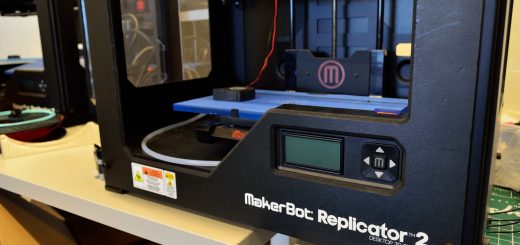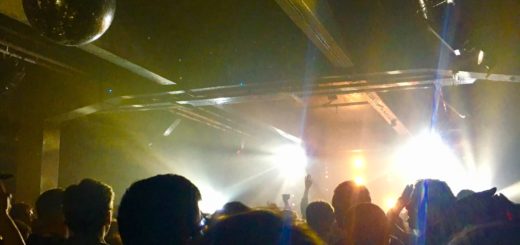The Acousticians
In the first of a two-part series, Alan Boyd looks at the little known beginnings of architectural acoustics
From natural amphitheatres to classrooms, snow holes to football stadiums, the way sound behaves in enclosed spaces can have a profound effect on our experience of the world. Behind most of the rooms and spaces you enter every day are a small band of physicists, engineers and architects who have attempted to make up for their failure as rock stars by improving our listening experience. These men and women are ‘The Acousticians’.
The modern field of architectural acoustics began almost accidently at Harvard University. A young physics lecturer named Wallace Clement Sabine was enlisted to perform the seemingly impossible task of improving the acoustics of a recently constructed lecture hall, considered acoustically inferior to others at Harvard. Sabine’s ‘impossible’ task was to isolate what made the new hall so perceptually inadequate and propose a systematic method for improving it. The subsequent nocturnal meanderings of cushions, rugs, organ pipes and sleep-deprived research assistants, from good rooms to bad and back again resulted in the Sabine equation:
RT60=0.161V/Sa
where RT60 is the time it takes for the sound level to decay by 60 decibels after it has stopped, V is the volume of the room, S is the absorbing surface area and a is the normalized acoustic absorbency of the room’s surfaces (0 is a perfect reflector, 1 a perfect absorber).
This relationship between a room’s reverberation time, its volume, surface area and surface absorbency is still used, largely unchanged, for designing classrooms and testing new house builds today. Amazingly, Sabine never received his PhD and up until this point had no documented interest in sound. The Boston Symphony Hall was the first to be designed employing Sabine’s work and it is still regarded as being among the top five concert halls in the world.
So why had no one attempted this work previously and why is reverberation time so important? Why do acoustic design faux pas such as the SECC still occur? And what do snow holes have to do with any of this?
The answer to the first question involves scale. Sabine made his discoveries in a highly empirical way, focusing on the overall change in reverb time at different frequencies. If we were to attempt to model what was happening to sound waves in a lecture or concert hall, it is doubtful which would beat you first, the geometry or the tedium. Sound is a transverse wave, so we can easily model what happens on one plane in a simple rectangular room using water and a wave tank. If a stationary impulsive point source at a single frequency is generated in the ‘room’, the effect will be similar to throwing a rock onto a still pond, with constructive and destructive interference occurring between the initial and reflected waves, until the energy dissipates. If the absorbency of the walls varies with frequency, the waves that will be reflected most strongly can be calculated and therefore a good idea of the frequency characteristics of the room’s decay can be obtained. Now let’s take a more complex space, such as St. Paul’s cathedral (other, secular examples are available). The simple relationships between opposing walls are now all but gone, the surface coverings are multitudinous and highly variable and there’s a dome in the ceiling, not to mention the increased distances sound waves must travel, meaning the air absorbency and the speed of sound will vary (due to changes in air temperature and humidity). Let’s add several sound sources and a PA system too. Finally, the number of people present, the clothes they are wearing, even the number of bald men in the audience make a difference to the sound reflection and absorption. Bald heads are acoustically reflective, therefore lengthening the RT60 when present in high enough numbers.
Sabine’s stroke of genius was to estimate the relations between the multitudes of factors that can affect the acoustics of a room. However, as architects develop ever more multifunctional and complex designs and noise laws and listener expectations become more stringent, a simple RT60 estimate and a subjective discussion of the merits of Victorian cornicing for creating pleasing acoustics becomes inadequate. Sometimes a room cannot fulfill all of its requirements and acoustics, as an invisible design issue, often suffers (as in the case of the SECC).
Architectural acoustics developed into a fully-fledged science in the post-war period, where many new concert and opera halls were built to previously unseen designs. This more scientific approach has caused a shift from the previous subjective or musical terms such as ‘timbre’, ’room-feel’ and ‘discrimination’, often measured using groups of ‘expert’ listeners. Since the 1950s, engineers and physicists such as Leo L. Beranek (if I have an idol in science, it’s him), M. R. Schroeder (a close second) and Heinrich Kuttruff introduced entirely new measurements and techniques to architectural acoustics, making large contributions to psychoacoustics along the way.
This new approach to acoustics will be discussed in detail in the next part, Gunshots and pink noise, but here’s a quick introduction. With the advent of portable tape recorders it became possible to not only measure the RT60 at different frequencies, but also to record it for further analysis. Initially, this allowed comparisons to be made between the early and late reflections present in the reverberation, indeed it allowed acousticians to decide where the cut-off should fall between an early or late reflection. The ratio of the energy in the early reflections to late reflections is known as clarity, denoted as C50(speech) and C80(music), taking early reflections as the first fifty and eighty milliseconds respectively. Through careful testing, these measurements have been correlated with subjective impressions of clarity, allowing rooms to be directly compared. After the previously mentioned RT60, C50/80 is probably the most enlightening objective measure of a room’s acoustic character. Several further measurements have been introduced, including binaural measurements to gauge listener ‘envelopment’, the sense of ‘being in the room,’ which is so difficult to recreate over speakers.
And snow holes? If you’ve ever been in the countryside after a heavy snowfall, you’ll have noticed the dampening effect snow has on noise levels. The really interesting thing about it (if you’re a failed meteorologist/acoustician) is that snow has the opposite effect on sound as it does on light. In the visible spectrum, it is an excellent reflector (leading to the Earth’s periodic ice ages) but to sound waves, it is highly absorptive due to the many air pockets between the snowflakes. This produces multiple reflections within the snow layer, dissipating the sound.
Part 2 will cover acoustic measurements in more detail, the historical and current techniques used to obtain them and the ‘virtual room’.










